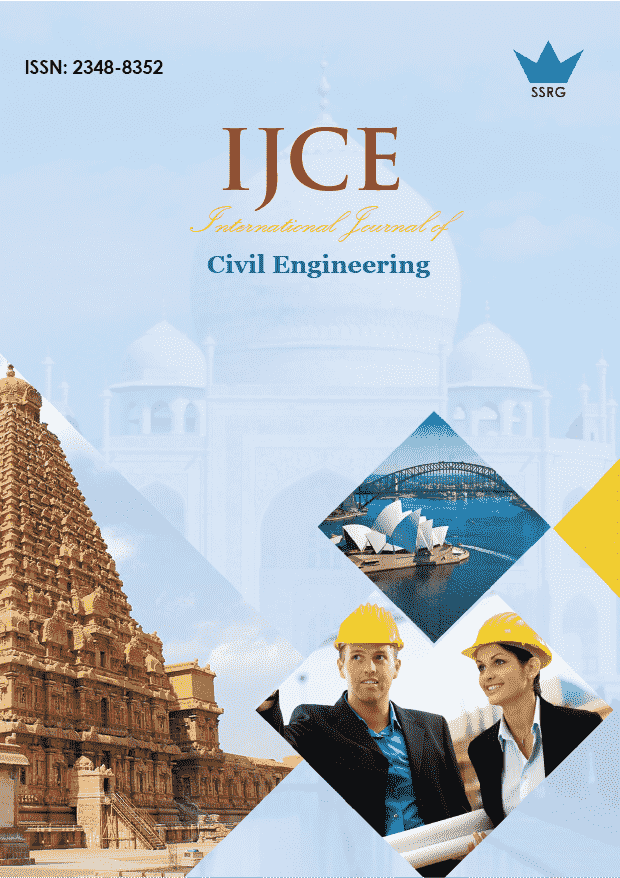Experimental Report on Flexible Pavement by Using Hydrophobic Silica Sand, Zeolite and Steel Mesh

| International Journal of Civil Engineering |
| © 2019 by SSRG - IJCE Journal |
| Volume 6 Issue 6 |
| Year of Publication : 2019 |
| Authors : R.Sundharam, R.Tamil Elakkiya, P.Vinoliya, P.S.suvetha, B.Sugapriya |
How to Cite?
R.Sundharam, R.Tamil Elakkiya, P.Vinoliya, P.S.suvetha, B.Sugapriya, "Experimental Report on Flexible Pavement by Using Hydrophobic Silica Sand, Zeolite and Steel Mesh," SSRG International Journal of Civil Engineering, vol. 6, no. 6, pp. 39-45, 2019. Crossref, https://doi.org/10.14445/23488352/IJCE-V6I6P108
Abstract:
The vision of our project is to reduce global warming, and the mission of the project is to construct flexible pavement without affecting the environment. The agent zeolite was mixed with asphalt mix to reduce carbon dioxide level and increase the strength of the pavement. Hydrophobic silica sand was used in the asphalt mix for the replacement of filler content to reduce porosity. The secondary aim of our project is to reduce the crack in pavement by using steel mesh. The reason behind the steel mesh is to increase the life span of the flexible pavement. Cost expenses of pavement construction and maintenance were compared with our innovative pavement construction as per the CPWD (Central Public Work Department). The aggregate tests such as impact test, abrasion test, crushing test were conducted as per IS- specifications. California bearing ratio and dry density test by core cutter method were identified the soil stability, type of soil which was under the pavement to increase strength. Pavement thickness was calculated for WMM (Wet Mix Macadam) and BC (Bituminous Concrete) by CBR test as per IRC 37-2001. Marshall Stability test, which deals with the stability and flows property of asphalt mix to obtained highly stabilized pavement layers. The IRC (Indian Road Congress) codes of practices were used for the pavement design standards and codes of Indian standards for the test procedures of bitumen.
Keywords:
Global warming, flexible pavement zeolite, hydrophobic silica sand, steel mesh – cracks, life span, cost expenses, CPWD, WMM (Wet Mix Macadam),
BC (Bituminous Concrete), Marshall test, IS and IRC Code of practices.
References:
[1] Asphalt mix design and construction- a selection of possible pitfalls, JJE Liebenberg, D. Rossmann, E. Fletcher (2004).
[2] A detailed study of CBR method for flexible pavement design, Mr. Devendra Kumar Choudhary, Dr. Y. P Joshi Scholar (2014).
[3] Study on co2 absorbing concrete, Syed Eashan Adil (2017)
[4] Bureau of Indian Standard 1202-1978 Determination of specific gravity.
[5] Bureau of Indian Standard 1205-1978 Determination of softening point.
[6] Bureau of Indian Standard 1203-1978 Determination of penetration.
[7] Bureau of Indian Standard 1206 (Part 1)-1978 Determination of viscosity Industrial viscosity.
[8] Bureau of Indian Standard 1208-1978 Determination of ductility.
[9] Bureau of Indian Standard 2386 –1963 (Part 4) Methods of test for aggregates for concrete (Mechanical properties).
[10] Bureau of Indian Standard 2720- (Part16) Method of test for soil (laboratory determination of CBR).
[11] Bureau of Indian Standard 2386 –1963 (Part 3) Methods of test for aggregates for concrete (specific gravity, density, voids, Absorption, and bulking).
[12] Indian Road Congress -37 (2012) Guidelines for design of flexible pavements.
[13] Indian Road Congress – 29,(1988) Specifications for bituminous concrete (asphaltic concrete) for road pavement
[14] Indian Road Congress -19 part 1 (1977) Standard specification and code of practice for water-bound macadam.

 10.14445/23488352/IJCE-V6I6P108
10.14445/23488352/IJCE-V6I6P108